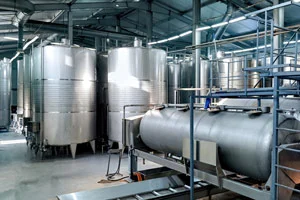Study performed by Paula Pérez-Porras, Ana Belén Bautista-Ortín, and Encarna Gómez-Plaza from the Department of Food Science and Technology, Faculty of Veterinary Sciences, University of Murcia, together with Ricardo Jurado Fuentes, technical director of the Agrovin Group.
The wine industry has used various techniques to facilitate the extraction of phenolic compounds from the grape during the maceration process. Interest in innovative techniques, such as high power ultrasound, has increased in recent years, replacing more traditional techniques such as the addition of pectolytic enzymes. This study evaluates the combined effect of ultrasound and oenological enzymes used on a semi-industrial scale during the crushing phase on the chromatic characteristics of red wine. The moment of the addition of the enzyme and the state of maturation of the grapes were considered variables.
This study aims to investigate the combined effect of ultrasound and pectolytic enzymes on the chromatic characteristics of a Monastrell variety wine and how the degree of ripening of the treated grapes affects its final characteristics. In addition, the study also considered the effect of the enzyme addition time (before or after sonication) on the use of less ripe grapes, as contradictory results have been reported regarding the effect of ultrasound on enzyme activity (Lieu & Le, 2010; Osete-Alcaraz et al., 2019; O’Donnell et al., 2010; Yachmenev et al., 2009).
The results show that the sonication of the crushed and destemmed grapes led to an improvement in the chromatic characteristics of the final wine. Ultrasounds were more effective than pectolytic enzymes in terms of increasing wine color and overall phenolic content, and when the enzymes were added to sonicated crushed grape paste, a synergistic effect was evident. Indeed, the chromatic characteristics of the wines made from less ripe grapes (12 ºBé) subjected to ultrasound + enzyme and 3 days of maceration were very similar to those of a control wine with 64 more days of maceration, or even better in the case of the ripest grapes (14 ºBé) subjected to ultrasound + enzyme and 3 days of maceration. Taking into account that the higher temperatures experienced during the grape ripening period have caused an earlier and shorter harvest, the availability of maceration tanks in the cellars may be limited, making it necessary to reduce the maceration time. These results indicate that the combination of ultrasound and enzymes could be considered a very interesting practice for reducing maceration times, thus increasing the productivity of wineries, since a 50% reduction in maceration time is possible with the use of ultrasound compared to traditional maceration. However, no such improvement was observed when the enzyme was added to the crushed grapes before the sonication process.
Another important fact is that the combination of sonication and long maceration times can facilitate the extraction of phenolic compounds, making it possible to obtain highly colored wines from less ripe grapes. This would also serve to reduce the alcohol content of wines without reducing the amount of phenols extracted, an aspect of great interest in the face of probable climate change.


